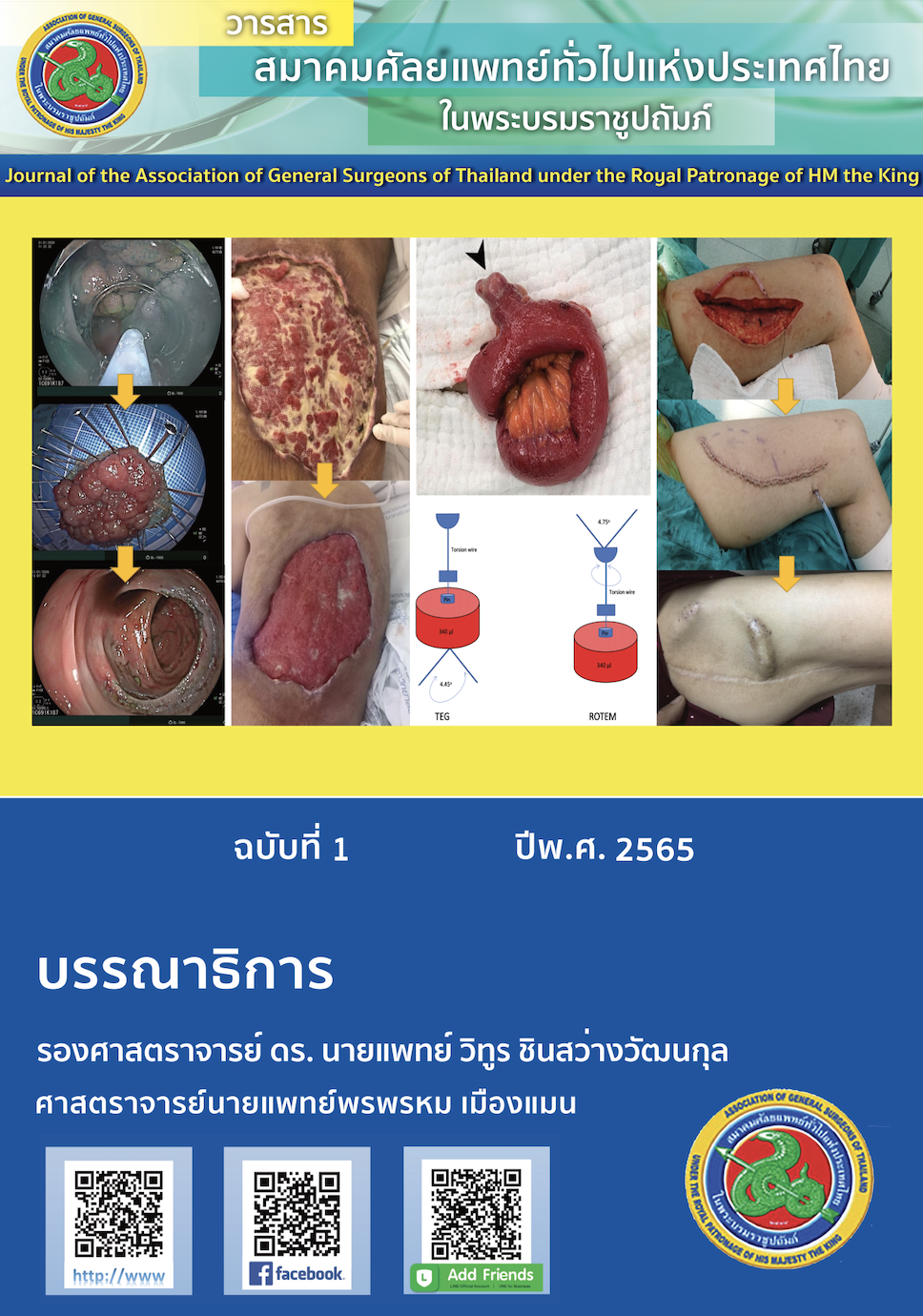ภาวะการแข็งตัวของเลือดที่ผิดปกติจากอุบัติเหตุ
บทคัดย่อ
ภาวะเลือดออกเป็นสาเหตุของการเสียชีวิตมากที่สุดในผู้ป่วยอุบัติเหตุ ปัจจัยหลักที่ทำให้มีเลือดออกจำนวนมากภายหลังการบาดเจ็บได้แก่ภาวะอุณหภูมิกายต่ำ ภาวะกรดเกิน และภาวะการแข็งตัวของเลือดผิดปกติ ข้อมูลปัจจุบันพบว่าภายหลังการบาดเจ็บเองร่างกายจะเกิดภาวะเลือดแข็งตัวผิดปกติจากอุบัติเหตุ(trauma-induced coagulopathy) ขึ้นทันที ความเข้าใจเกี่ยวกับกลไกดังกล่าวถูกใช้เพื่ออธิบายปรากฏการณ์ที่เกิดขึ้นตามหลังบาดเจ็บรุนแรง การวินิจฉัยไม่สามารถใช้การตรวจการแข็งตัวของเลือดด้วยวิธีการดั่งเดิม แนะนำให้ทำการตรวจ viscoelastic hemostasis assay (VHA) ในผู้ป่วยที่สงสัยภาวะนี้เพื่อการวินิจฉัยและวางแผนการรักษา การรักษาภาวะนี้ใช้หลักการกู้ชีพโดยควบคุมการบาดเจ็บ (damage control resuscitation) ร่วมกับการให้เลือดและส่วนประกอบของเลือดปริมาณมาก (massive transfusion) เป้าหมายเพื่อควบคุมเลือดออดและเพิ่มการไหลเวียนไปยังอวัยวะส่วนปลายที่สำคัญ
คำสำคัญ: ภาวะเลือดแข็งตัวผิดปกติจากอุบัติเหตุ ภาวะเลือดออก การให้เลือดและส่วนประกอบของเลือดปริมาณมาก หลักการกู้ชีพโดยควบคุมการบาดเจ็บ การบาดเจ็บ




